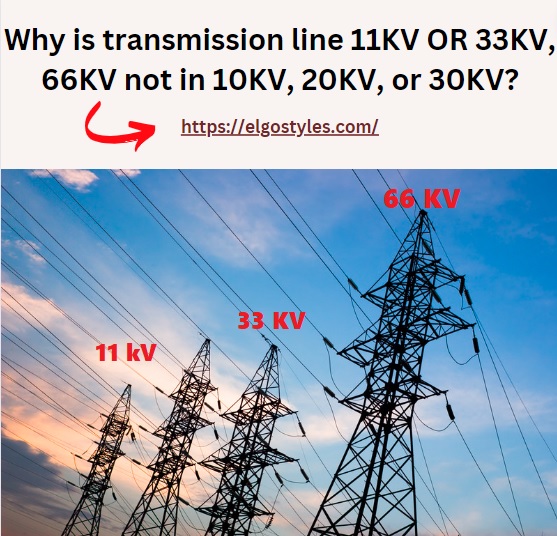Answer:
Transmission line voltages like 11kV, 33kV, and 66kV are standard designations based on practical considerations, system requirements, and historical conventions. These values optimize efficiency, cost, and technical feasibility.

Reasoning:
System Compatibility: Standardizing transmission voltages promotes system compatibility, facilitating the interconnected operation of power grids and ensuring efficient energy transfer.
Economic Considerations: Specific voltage levels are chosen to balance the cost of transmission infrastructure with the desired power transfer capabilities, minimizing expenses while meeting demand.
Historical Consistency: Over time, established voltage levels such as 11kV, 33kV, and 66kV have become industry norms, making equipment manufacturing, maintenance, and replacement more straightforward and cost-effective.
FAQs:
Q: Why is 11kV a common transmission voltage?
A: 11kV is chosen for medium voltage transmission due to a balance between efficiency, insulation requirements, and cost-effectiveness.
Q: Could transmission lines be designed at arbitrary voltage levels?
A: While theoretically possible, standardized voltages ensure consistency, interoperability, and cost efficiency across the power grid.
Q: What challenges are associated with higher transmission voltages?
A: Higher voltages pose challenges in terms of insulation, equipment costs, and safety, making careful selection of transmission voltage crucial.
Q: Could lower voltages like 10kV be more energy-efficient?
A: Transmission at lower voltages may incur higher losses, as higher voltages allow for reduced current, minimizing resistive losses.
Q: Are 11kV, 33kV, and 66kV the only standard voltages?
A: No, other standard voltage levels exist, but these three are common for medium voltage transmission due to practical considerations.
Q: Does transmission voltage affect power loss during transportation?
A: Yes, higher transmission voltages result in lower power losses during long-distance electricity transportation.
Q: Are environmental factors considered in choosing transmission voltages?
A: Yes, environmental factors, including the impact of electric fields, are considered when selecting transmission voltages.
Q: Could transmission lines use only high voltages like 100kV or 200kV?
A: While technically possible, higher voltages present challenges in insulation, equipment costs, and safety, making a balance essential.
Q: Are transmission voltages standardized globally?
A: While there is regional variation, many countries adhere to international standards, promoting compatibility in interconnected power systems.
Q: Could transmission voltages change in the future?
A: Future advancements may influence transmission voltages, but any changes would require careful consideration of technical, economic, and regulatory factors.
 Electrical Engineering World Wiring a Brighter Tomorrow!
Electrical Engineering World Wiring a Brighter Tomorrow!